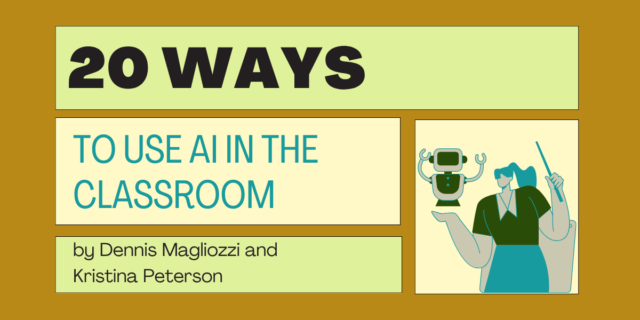
Teaching is a profession that elicits a myriad of questions throughout the day, from the rhetorical to pedagogical. Finding intellectual space to ponder these questions in a way that will impact practice can be tough, and we want to help. Our new series, “In The Quiet: Reflections on Learning” invites you into the mind of an expert in the field through a brief Q&A. So, wherever your quiet is—after the bell, on the commute, or elsewhere—please enjoy this space to reflect as you hone your craft.
Today we learn from the expertise of Linda Rief, who taught 8th grade writing for 40 years, retiring in 2019. Linda has authored numerous books about teaching writing and shares her thinking below about supporting middle school writers.
![]()
Why do you think some middle and high school writers seem to get stuck?
![]()
Many middle and high school students get stuck as writers because they are too often given the topic about which to write or the genre in which to write. Choice matters for all of us as writers. We have to care about those things we write about. When encouraged to write about their stories, their beliefs, their thinking, their feelings, their imaginings, most kids are able to get words down. When invited to decide on the genre in which they write—including visual and digital media—most kids become “unstuck.”
![]()
What’s most important to helping them get unstuck?
![]()
Choice is most important in helping kids “get unstuck.” We all work hard at those things that matter most to us—playing an instrument, getting better at a sport, coding, gardening, etc. Writing is no different. We are willing to work hard at something, even writing, if what we have to say is important and/or pleasurable to us, even if it takes extraordinary effort and persistence.
Yet, also realizing that someone cares about their thinking, matters. Giving kids an audience beyond the classroom—whether it is one person to whom they are sharing their writing, a local or national publication, or a writing contest—helps them believe that they have important things to say and their thinking matters to someone else. If kids are continually asked to complete an assignment for just the teacher, most will comply but few will feel the pleasure, or desire, to continue putting their thinking or feeling into writing for themselves or others.
![]()
How can we make space for a wide range of writing opportunities in the classroom while also keeping state standards in mind?
![]()
State standards are a guide to all that we ask kids to do as writers and readers. When we look at what we do on a daily basis as writers it becomes clear the standards are covered because they are embedded in that writing. They are not meant to be out of context as a stand-alone lesson. Over a long period of time, they are met in the natural work of continual creating, drafting, revising, editing, reflecting, and evaluating that work. It’s an ongoing process that happens over weeks, months and years. We don’t need to “make space” for standards IF we are making space for a wide range of writing opportunities. When the standards are natural to the process, they become natural as the child grows as a writer.
![]()
As a learner, what professional learning experience has had the most positive impact on your teaching career?
![]()
The research of Don Graves with young children as writers, especially using drawing and temporary spelling, and Nancie Atwell’s work with adolescents, offering them choices as readers and writers, each had a profound impact on my learning and teaching. To read them, to hear them, to work with them kept me thinking daily about getting to know each child well enough to try to figure out what I had to do to keep them moving forward as writers and readers. Every child is different. Every day is different. Follow the child. It never meant the classroom was a free-for-all. There was a framework, but within that planning and design, was always the option, “How can I help you? What could I do differently that would help you grow as a writer? As a reader? What could you do differently that would help you grow stronger as a writer and reader?”
From both Don and Nancie I also learned, you must be what you teach. How could kids trust me as a teacher of writing if I am not writing along with them? Trying to find the thinking that matters to me and the strongest way to convey it? Solving problems in that writing? Taking the same risks I am asking the kids to take. Each day I entered that classroom with both Don and Nancie on my shoulders. It was difficult work. It was joyous work.


